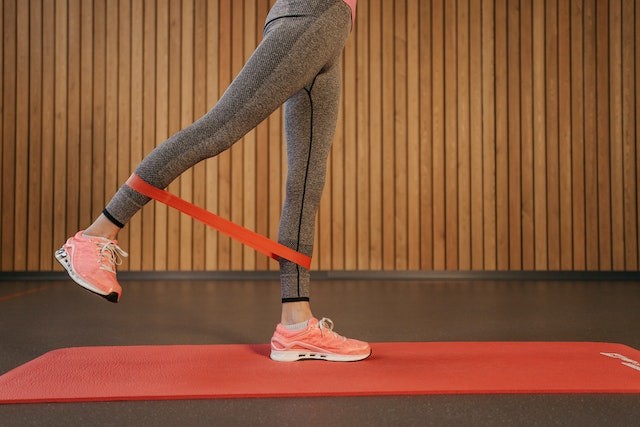5 Best Exercises For Leaky Heart Valve


A leaky heart valve, also known as mitral valve regurgitation, is a condition in which blood flows backward through the heart due to a faulty valve. This can lead to various symptoms, including fatigue, shortness of breath, and chest pain. While medications and surgery may be necessary in severe cases, exercise can also play a significant role in managing the condition. In fact, regular physical activity can improve heart function and reduce symptoms.
In this blog, we will discuss the five most effective exercises for individuals with a leaky heart valve. We will also provide tips and recommendations for safely incorporating these exercises into your routine.
Cycling is a great exercise for individuals with a leaky heart valve because it is low-impact and can improve cardiovascular health. Cycling helps to strengthen the heart and lungs while also increasing muscle strength and endurance. To get started with cycling, it's important to choose a bike that fits properly and to wear appropriate safety gear such as a helmet.

It's recommended that individuals with a leaky heart valve begin with a low-intensity cycling routine and gradually increase the duration and intensity over time. Aim for at least 30 minutes of cycling per session, three to five times per week.
While cycling, it's important to pay attention to your body and not push yourself too hard. Take breaks as needed and stay hydrated. If you experience any chest pain or other symptoms, stop cycling immediately and seek medical attention.
Swimming is a low-impact workout that is easy on your joints and can be done by people of all ages and fitness levels. Swimming provides a full-body workout that can help to improve your cardiovascular health, strengthen your muscles, and increase your endurance. It can also be a great way to reduce stress and improve your mental health.

Swimming can be done in a variety of settings, including indoor and outdoor pools, lakes, and oceans. It is important to always practice safety when swimming and to be aware of your surroundings.
Some popular swimming strokes include freestyle, breaststroke, backstroke, and butterfly. You can also incorporate different types of equipment, such as kickboards and pull buoys, to vary your workout and target different muscle groups.
The word "yoga" means to unite or to join, and this practice is based on the belief that our physical, mental, and spiritual well-being are interconnected. Yoga has the unique characteristic of being able to be customized to suit an individual's needs and abilities. There are various styles and levels of yoga for beginners and experts alike. Some of the most popular styles include Hatha, Vinyasa, Ashtanga, and Bikram.

Yoga has numerous physical and mental benefits. It can improve flexibility, strength, balance, and posture. Moreover, yoga regularly reduces stress, anxiety, and depression, as well as improves moods and well-being.
Perhaps what makes yoga truly unique, however, is its emphasis on mindfulness and self-awareness. Through meditation and breathwork, yoga encourages us to become more present and in tune with our bodies and minds. This can lead to a greater sense of self-awareness, as well as a deeper understanding of the interconnectedness of all living beings.
Tai Chi is a low-impact form of exercise that involves slow, gentle movements, and deep breathing techniques. This ancient Chinese practice is an excellent option for individuals with a leaky heart valve as it can help improve cardiovascular function, balance, and overall physical and mental well-being.

Tai Chi is beneficial for individuals with a leaky heart valve because it can help reduce stress levels and improve circulation, which is essential for heart health. This form of exercise is also low-impact, which means that it's gentle on the joints and muscles, making it an excellent option for individuals who may have difficulty with other types of exercise.
When practicing Tai Chi, it's essential to focus on breathing deeply and slowly while performing the movements. This can help improve oxygenation to the body, which is crucial for overall health. Tai Chi can also help improve balance and coordination, which can be beneficial for individuals with a leaky heart valve, who may be at risk of falls due to dizziness or fatigue.
Resistance training increases muscle strength, which can improve overall cardiovascular health and reduce symptoms. Resistance training should, however, be approached with caution and under the guidance of a healthcare professional.

To begin, it's important to choose exercises that focus on major muscle groups such as the chest, back, legs, and arms. Examples of resistance training exercises include squats, lunges, push-ups, and bicep curls.
When performing resistance training, it's important to use proper form and technique to prevent injury. It's also wise to avoid holding your breath during exercises, as this can increase blood pressure and strain the heart.
The health of your heart and overall well-being can be adversely affected by a leaky heart valve. Exercise, however, can help manage your symptoms and improve your heart health. You can improve your heart health, enhance your cardiovascular health, and improve your quality of life by following the five best exercises for a leaky heart valve described in this blog. Be sure to consult with your healthcare professional before starting an exercise program and adjust your exercise intensity accordingly. With commitment and consistency, you can manage your leaky heart valve with a balanced exercise routine.
It's recommended that individuals with a leaky heart valve engage in physical activity for at least 30 minutes per session, three to five times per week.
It's important to listen to your body and not push yourself too hard. Stay hydrated, take breaks as needed, and stop exercising immediately if you experience chest pain or other symptoms. It's also important to work with a healthcare professional to develop a safe and effective exercise routine.
It depends on the severity of the condition. In some cases, high-intensity exercise may not be recommended. It's important to consult with a healthcare professional before starting an exercise routine.
Strength training can be safe for those with a leaky heart valve as long as it's done under the guidance of a qualified trainer and with the approval of a doctor. It's important to avoid exercises that put excessive strain on the heart and to start with light weights and low intensity.
Popular
6 Affordable Makeup Organizers To Declutter Your Vanity
For the makeup lovers! Here are the best 6 Affordable Makeup Organizers To Declutter Your Vanity.
Look at the Stunning Debut of Alia Bhatt at the Met Gala 2023
Alia Bhatt Met Gala 2023 debut was a huge success, and she certainly made a mark with her stunning look. Now grab for more details here!
Crunches Vs. Sit-Ups: Which One Is Best For Your Abs?
Exercises that burn fat can help you lose weight .If you want to know Crunches Vs. Sit-ups: Which one is best for your Abs read below
Black Seed Oil Benefits For Hair and Skin
Black seed oil offers a wide range of benefits for hair and skin. Now get more information about black seed oil visit the blog!
